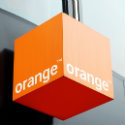
NB-IoT burst out of the blocks in 2016, discovered its shoelaces were badly knotted and promptly nosedived into the racetrack.
No one is really sure if 5G will sprint to its rescue or sidestep it altogether, but several big operators currently see little use for the hobbling Internet of Things (IoT) technology, once touted as the mobile industry's future IoT champion.
They include Orange. The French operator has long preferred other technologies and has apparently not warmed to NB-IoT this year.
"We are keeping an eye on NB-IoT," said Jean-Marc Lafond, Orange's IoT portfolio director, when asked during a webinar earlier today about Orange's investment in that technology.
"In some countries you have the local ecosystem and local actors who do want NB-IoT, and then we are studying very carefully if such a deal makes sense."
But the operator has built its IoT strategy around two other technologies, and there is no sign that is about to change four years after NB-IoT was first standardized.
From the mobile industry's bag of standards, Orange has fished out LTE-M, an NB-IoT sibling. It has also made investments in LoRa, a technology based on unlicensed spectrum that took shape outside the telecom sector.
Across Europe, Orange now has LTE-M networks up and running in Belgium, France, Spain, Poland and Romania, and it is due to launch them in Slovakia and Moldova.
A LoRa service is currently available in France and parts of Slovakia, as well as at a few sites in Romania.
Figure 1: Orange's IoT footprint in Europe  Source: Orange.
Source: Orange.
Belgium and Luxembourg stand out as the only geographical markets where Orange has seen any need to invest in NB-IoT.
Elsewhere, it seems, the technology simply does not measure up to Orange's requirements.
"For example, LTE-M offers higher data rates than NB-IoT, lower latency, advantages in mobility and voice and SMS support," says Kester Mann, an analyst with CCS Insight who raised the webinar question with Orange about its interest in NB-IoT.
Similarly, for stationary objects that use lower data rates, Orange prefers LoRa to NB-IoT.
Lafond alludes to the maturity of both LTE-M and LoRa, including their device ecosystems, and reckons there was "overcommunication" around some IoT technologies.
While Orange has not entirely closed the door on NB-IoT, "it's clear that it believes other narrowband flavors can satisfy demand for IoT connectivity," says Mann.
Too soon for a write-off
Orange's apathy does not mean NB-IoT can be written off. Other big European operators, including Deutsche Telekom and Vodafone, remain firmly committed to it.
Nor has any other wide-area technology seen lift-off.
Only Vodafone appears to have more than 100 million IoT connections, despite earlier forecasts there would be tens of billions worldwide by 2020.
It claimed 102.9 million at the end of March, many based on the old 2G standard.
Deutsche Telekom does not disclose recent numbers, while Spain's Telefónica had 24.3 million in June. Orange supports only 21 million and does not break that down by technology.
Want to know more about 5G? Check out our dedicated 5G content channel here on Light Reading.
Outside Europe, however, NB-IoT has had some major upsets this year.
"The technology's highest profile setback came when Japanese operator NTT DoCoMo announced it is shutting down its NB-IoT network, less than a year after launching a service," says Mann.
"Again, it appears that LTE-M emerged as a preferred technology."
Dish, a US operator building that country's fourth mobile network, has also dumped NB-IoT in recent months, writing off $253 million accordingly.
"We no longer intend to complete our narrowband IoT deployment," said the operator in a May filing with the Securities and Exchange Commission.
"More widely, NB-IoT appears to have lost momentum this year," says Mann.
NB-IoT stakeholders remain hopeful. When it comes to wide-area technologies, the entire market has developed more slowly than was originally expected.
5G could make a difference to NB-IoT's prospects if it helps the technology to evolve and does not simply throw up another option.
In the meantime, NB-IoT could use some telco love.
Related posts:
— Iain Morris, International Editor, Light Reading
About the Author(s)
You May Also Like











